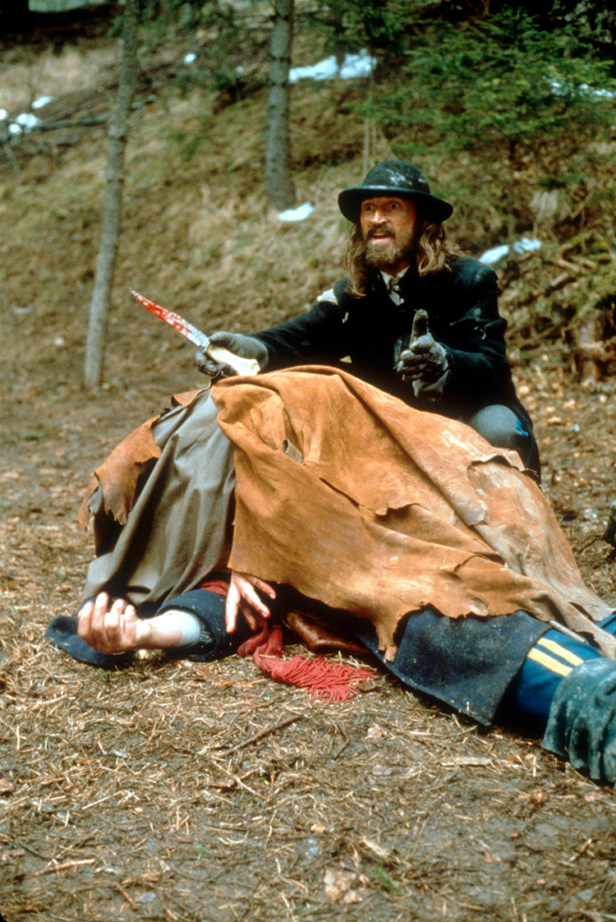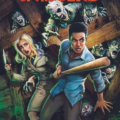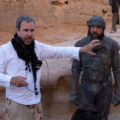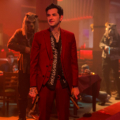In the winter of 1874, unqualified and unscrupulous guide Alferd Packer led a party of prospectors to their demise in the Rocky Mountains, eventually being found guilty of killing them for their possessions and cannibalising their remains to sustain himself. As expeditions go, it could have fared better. The journey made by Ravenous might not have come with a literal bodycount, but it was almost as arduous. By the time this darkly comic horror-thriller was released it had lost one director, nearly gained another, and was eventually safely guided to its destination by the greatly missed Antonia Bird, who died back in 2013.
Aspiring screenwriter Ted Griffin was “dead-broke” when inspiration struck after a chance encounter with a protracted aside about Packer in Dashiell Hammett’s detective novel The Thin Man. “When I got to the Packer story, I stopped because I realised there was a movie in there somewhere,” says Griffin. “What excited me was the notion of a rescue party getting ambushed by the supposed rescuee and the new guy to the unit —and to the area— being the only one to survive.”
By winter 1994, the bare bones of what would become Ravenous were in place and Griffin began researching and writing. Ravenous sees John Boyd (Guy Pearce) punished for cowardice during the Mexican-American War in 1847 by being ‘promoted’ to Captain at Fort Spencer, a remote outpost by the wintry Sierra Nevada mountains, inhabited by a motley crew of soldiers and Native Americans.
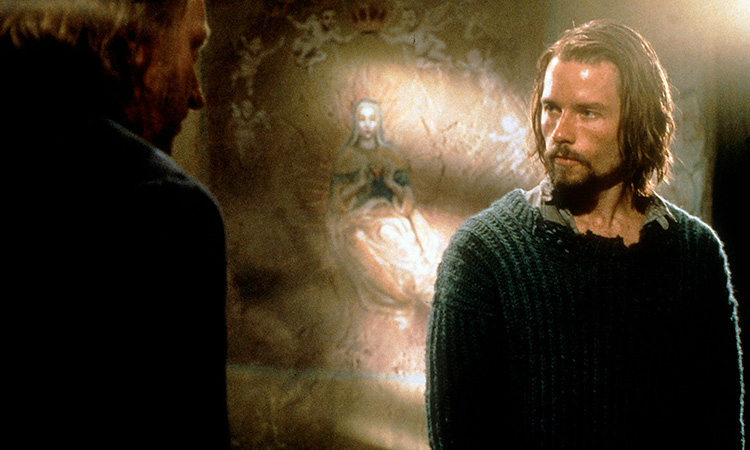
The backwater tranquillity is interrupted by the arrival of a stranger, F.W. Colqhoun (Robert Carlyle), with a gruesome tale of woe and inexplicable restorative abilities…
A number of films are cited as inspirations during the writing process, among them two by John Carpenter: The Thing (“due to its genre and setting and Hawksian masculinity”) and Assault On Precinct 13 (“likely the inspiration for wiping out so much of the cast at the 45-minute mark”). Deliverance, The Silence Of The Lambs and Dances With Wolves all bled into the script but in the mid-Nineties there was one influence that stood out. “Pulp Fiction opened in October of 1994 and injected insulin into every screenwriter out there, for better or worse,” recalls Griffin. Reaching the point in the story where a lone Boyd is stranded in the wilderness, Griffin was at a loss what to do next until Tarantino’s structural ingenuity encouraged him. “Pulp Fiction inspired me to restart the story — get Boyd back to the fort and flip the dilemma on its head: now he doesn’t need to save himself but everyone else.
“As for genre, I knew it was a mish-mash of horror and adventure, with humour to relieve the tension. I didn’t imagine the film as a black comedy. It probably became so only because the trials of the production pared down the other elements until the comedy wasn’t so much relief as a primary element. And I really didn’t first imagine the movie as being about cannibalism, just as Psycho isn’t about cross-dressing. The hunger for human flesh was intended to be a McGuffin.”
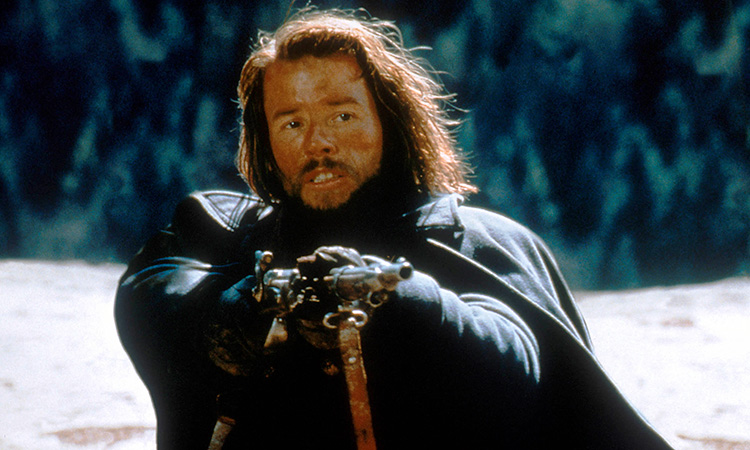
The finished script languished for nearly a year but Griffin is pragmatic: “It had very little going for it: it was a Western, it was period, it was gory, it was about cannibalism, it had no major female roles.” Having nearly written it off, Griffin completed a new screenplay, Best Laid Plans, which caught the attention of the late Laura Ziskin, president of Fox 2000, and she bought both scripts in October 1996. Things were taking shape.
Macedonian director Milcho Manchevski had garnered significant praise for Before The Rain, which picked up the Golden Lion at Venice Film Festival and an Oscar nomination. Hollywood had offered him projects for years while he tried to get his own film, Dust, off the ground but none worked out. The project that did convince him was Ravenous. “I grew up on cowboy comic books and Spaghetti Westerns, but also horror films,” Manchevski says. “It reminded me of vampire films, except the vampires are cannibals in this case, so it was innovative. It’s very seldom you see a scary film set in the American West. This was like going back to the sandbox and playing with something that could be fun. The texture on paper felt fairly realistic.”
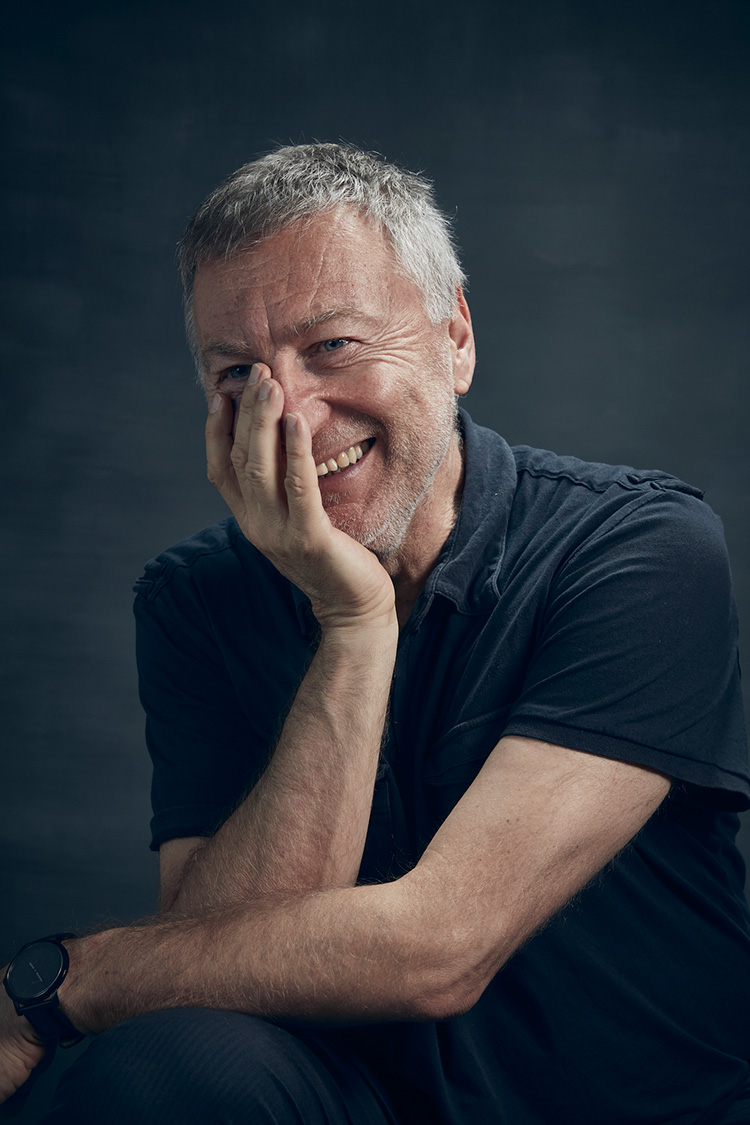
Putting aside his concerns about the Hollywood industry, he was hired as director. “It promised to be both very expressive and dark and, if done right, it could be a good metaphor for a number of things, but also be fun and commercial. I don’t see anything wrong with commercial films. I fault films that are manipulative and stupid.”
He set about hiring a crew, deciding on locations —opting for Barrandov Studios in Prague and the Tatra Mountains in Slovakia— and prepping the film: “I love research. I think Fox was the only studio that still had a research department and we assembled something like 1,100 pages on Native American tribes, cannibalism, The Donner Party, the expansion westwards, military life.”
Pearce and Carlyle were cast in the lead roles, on the back of breakout performances in L.A. Confidential and The Full Monty respectively, prompting a ‘Scotifying’ of Carlyle’s character’s name from Colburn to Colqhoun. David Arquette, Jeffrey Jones, Neal McDonough and Jeremy Davies rounded out the main cast. It was during casting that Manchevski feels things started to fray. He and Griffin both wanted Tom Waits for Private Cleaves, but Manchevski recalls Ziskin feared it becoming like a Jim Jarmusch film: “Without even asking me, she hired David Arquette because he was in Scream. She was really trying to control every single aspect; micromanage everything down to the non-speaking parts.”
Although Manchevski and Griffin fought studio interference together – including the idea that the film feature present-day bookends – their relationship was civil but fraught. Griffin felt that Manchevski was changing the script for the sake of it, while Manchevski maintains he was pushing for extra detail: “I loved the script. I wanted to make it as authentic as possible, so identify the tribe where this [Wendigo] legend comes from, or imagine where it could have come from.” Budgetary constraints also meant that sequences like the centrepiece chase scene were stripped back, excising character moments and action beats too expensive to film.
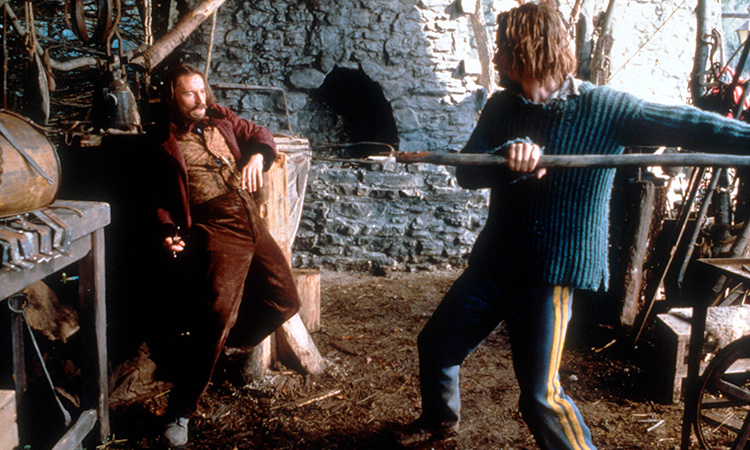
In January 1998, production began at Barrandov, where the interiors were shot. There were two weeks of rehearsals before shooting began. “I think the atmosphere on set, with the cast, was good but there was a lot of tension with production and I think the crew felt caught in between,” Manchevski recalls. “In the way we photographed the costumes and sets, it was meant to be really dirty, ugly and realistic, so that it would have integrity but also a tone that would be attractive to people. The studio didn’t like how dark and gloomy it was. Dark, but quirky — it was offset with humour. They would send comments like, ‘you need more close-ups of David Arquette’. But once you start shooting, it comes to a head. Usually on a production, two or three weeks is a turning point: if you want to change something, that’s when you do it.”
And come to a head, it did. Two weeks into shooting, Ziskin flew to Prague and fired Manchevski, leaving the film without a director. “I was completely blindsided,” Manchevski says. “I guess it was because I was not obedient. In a way, it was a relief because the rest of it was going to be a nightmare and I’m sure I was going to walk away at some point. I didn’t know how to fight it and I’m not sure I wanted to because it was such a miserable experience.”
Although Griffin ultimately feels Manchevski wasn’t suited to the material, there was support elsewhere. Key crew members left the project in revolt, post-firing set photos show cast members bearing the slogan ‘VIVA MANCHEVSKI’, and Pearce has been vocal in his defence over the years.
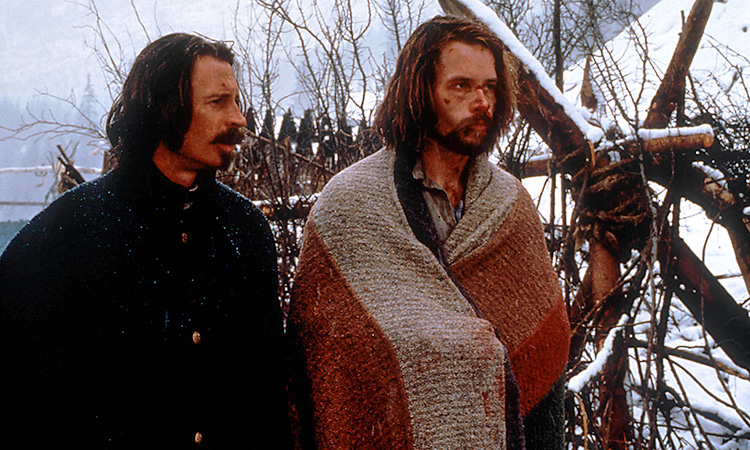
Ziskin lined up a new director, Raja Gosnell, and her choice didn’t go down well with the cast, who refused to continue. “In retrospect, Raja didn’t stand a chance,” Griffin says. “Replacing Milcho, who had the artistic pedigree of an Oscar-nominated foreign film, with the guy who’d only directed Home Alone 3 was never going to fly.”
It was Carlyle who championed his frequent collaborator Antonia Bird as a replacement. After two weeks of shutdown, the film had a new director. However, the script changes weren’t done. “I worked with her for a few days on the script —restoring some things, cutting others because of loss of time and money— as she scrambled to re-prep,” Griffin remembers. “Antonia was a Brit, which is probably just as —if not more— important a perspective she brought to this story than her female one. But far more important than either was that she was an excellent storyteller.”
Bird rallied the cast and new key crew members and the shoot moved from Prague to Slovakia to Mexico, without any further major incidents other than acts of God, like a severe lack of snow for the exterior scenes. Bird held the film together through additional structural changes and further studio notes, leaving her mark firmly upon it, including an experimental score collaboration between Michael Nyman (repurposing some music from an unused score for Practical Magic) and Bird’s colleague from 1997’s Face, Damon Albarn.
Griffin had been away from the set for most of the shoot and post-production, so the film came with surprises at the world premiere. Of the irreverent quotes which preface the film (one from Nietzsche, the other an unattributed ‘Eat Me’), it was fair to say they didn’t adhere to his vision. “I went pale when I first saw them. Man, did I hate them. Still do. [Ziskin] felt the audience needed to be told that it was okay to laugh. I thought it told the audience it was okay to leave. The bright side? It sets the bar low so the rest of the film seems smart by comparison.
“My feelings about the final version of Ravenous are mostly positive. That it exists at all is a miracle. It was an odd bird for a studio to make, and for talent to sign up for. I am proud of that, and grateful. Was it compromised? Absolutely. Then again, every movie ever made is a compromise of sorts. There’s stuff I really loved in the script that got cut or diminished, either by Milcho or the necessities of patching the movie together after his exit. But there’s also stuff as a result of Milcho, and as a result of the craziness attendant to his dismissal, which I love. So, it’s a trade-off. I’m very proud of it. It’s not exactly what I had in mind when I started, but its oddness, I realise, is a feature, not a glitch.”
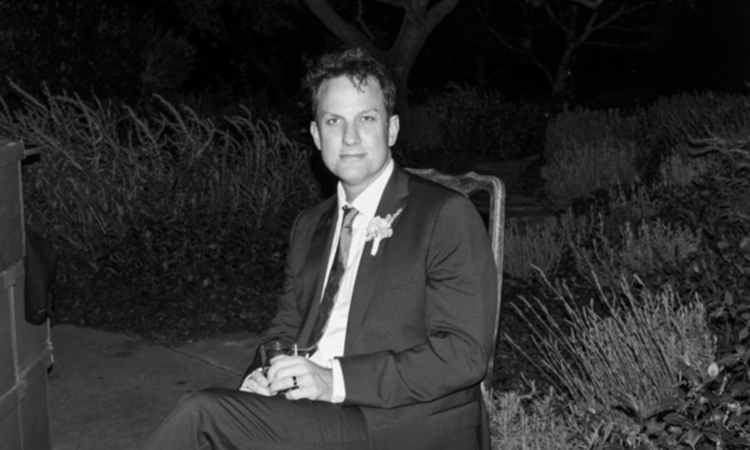
This outsider status showed in its release and ultimately disappointing box office. “Fox felt they had a dud on their hands — it apparently tested very, very badly, which wasn’t a surprise. Still, I had no idea it would flop as badly as it did. It was disappointing, and a bit embarrassing since it was my first film. Not that I expected a sleeper hit. The upside? It prepared me for much worse embarrassments to come.”
Griffin followed Ravenous by writing the screenplay for Steven Soderbergh’s Ocean’s Eleven remake. “I sensed I should take a gig before Ravenous came out, should it. One lesson I took from the experience was to pursue a more accessible subject matter with my next project. And it proved true. Getting a movie made about a casino heist with the cast wearing great-looking clothes proved a lot easier than making one about blood-soaked bearded men trying to eat one another.”
For Manchevski, it marked his last foray into Hollywood filmmaking. “It was humiliating, it made me absolutely undesirable in Hollywood. Not just being fired but especially the misinformation campaign afterwards,” he says. “I was naïve in thinking you can preserve your creative integrity and work for Hollywood money. You pretty much have to do what the money wants you to do and that’s not why I’m in this business.”
And has he seen Ravenous? “I didn’t feel like watching the finished film. Maybe in about 50 years.”
Ravenous is available to buy on DVD now.
